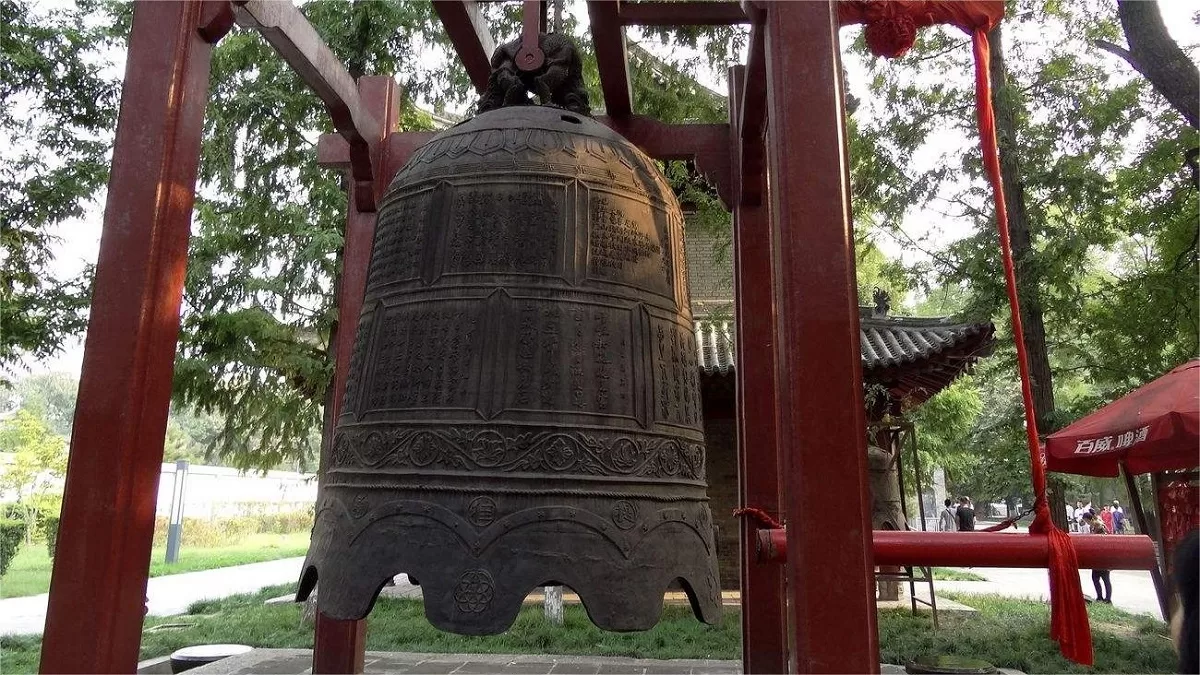The Bell of the Small Wild Goose Pagoda is one of the most significant cultural artifacts in Xi’an, China. It was originally housed in the pagoda during the Tang Dynasty, but is now on display in the Xi’an Bell Tower Museum. The bell weighs approximately 10 tons and measures over three meters in height.
The Bell of the Small Wild Goose Pagoda is a marvel of ancient Chinese metalworking. It was cast in the year 711 AD during the Tang Dynasty and is made of bronze. The bell features intricate carvings of Buddhist images, including Bodhisattvas and Buddhas, as well as Chinese calligraphy and decorative motifs. The bell is also inscribed with the names of its casters and the dates of its creation.
The bell was not only a functional object, but also a symbol of religious and cultural significance during the Tang Dynasty. It was used to mark the hours of the day and to announce important events and ceremonies. The bell’s deep and resonant tone was said to have a calming and soothing effect on those who heard it, and it was believed to have the power to drive away evil spirits and bring good luck.
Today, the Bell of the Small Wild Goose Pagoda is a popular tourist attraction and an important symbol of Chinese history and culture. Visitors can see the bell up close and appreciate its intricate details and craftsmanship. The bell is also still used to mark the hours of the day in Xi’an, as it has been for over a thousand years. The Bell of the Small Wild Goose Pagoda is a testament to the artistic and technological achievements of the Tang Dynasty and remains an important cultural treasure today.


